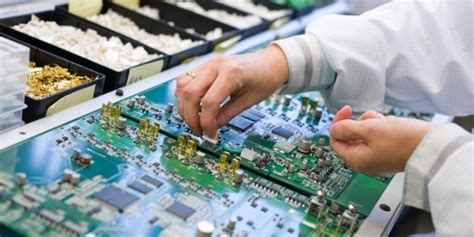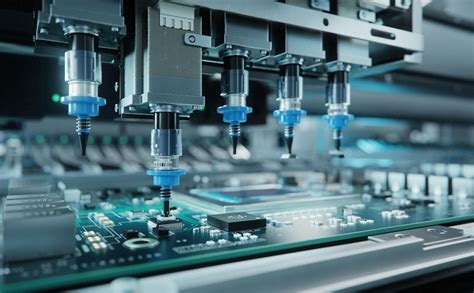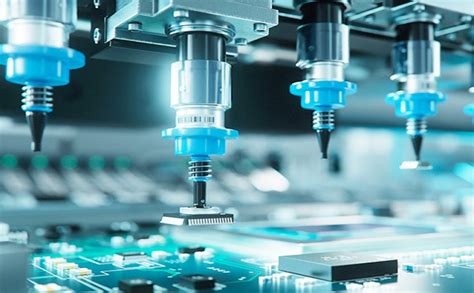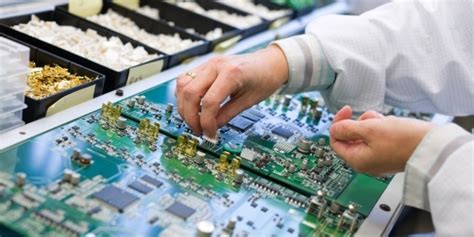Precision SMT Assembly Services for Reliable PCB Production

Key Takeaways
Modern PCB assembly relies on precision SMT (surface-mount technology) to ensure consistent performance in electronic devices. By integrating advanced automated placement systems and reflow soldering techniques, PCBA providers achieve micron-level accuracy, critical for mounting miniature components on densely packed boards. This approach minimizes human error while enhancing throughput, making it indispensable for industries demanding high reliability, such as aerospace and medical electronics.
Tip: When selecting an SMT assembly company, verify their adherence to IPC-A-610 standards and certifications like ISO 9001 to guarantee compliance with industry benchmarks.
A streamlined PCB assembly workflow combines design-for-manufacturing (DFM) analysis with real-time process monitoring, ensuring defects are identified early. For PCBA projects, rigorous automated optical inspection (AOI) and X-ray testing further validate solder joint integrity and component alignment. These steps, paired with traceability systems, create a closed-loop quality framework that reduces rework costs and accelerates time-to-market.
Transitioning to professional SMT assembly services not only optimizes production efficiency but also future-proofs designs against evolving technological demands. By leveraging expertise in material selection and thermal management, trusted partners deliver high-quality PCB production that meets both performance and durability expectations.

Precision SMT Assembly for PCB Reliability
Modern electronics manufacturing demands uncompromising reliability, and PCB assembly processes play a pivotal role in achieving this. Precision SMT (Surface-Mount Technology) assembly ensures consistent component placement and soldering accuracy, directly influencing the longevity and performance of PCBA (Printed Circuit Board Assembly). By utilizing high-speed pick-and-place machines and reflow soldering systems with micron-level precision, manufacturers minimize defects such as tombstoning or voiding, which compromise board integrity.
Advanced inspection tools, including automated optical inspection (AOI) and X-ray analysis, further enhance reliability by identifying microscopic flaws in solder joints or misaligned components. These quality assurance steps are critical for applications requiring high thermal or mechanical stress resistance, such as automotive or industrial electronics. Additionally, the use of lead-free solder pastes and moisture-sensitive component handling protocols ensures compliance with international reliability standards like IPC-A-610.
For PCB assembly to deliver consistent results, process control parameters—such as temperature profiles and stencil thickness—must be rigorously optimized. This precision-driven approach not only reduces rework rates but also strengthens the electrical connections within the PCBA, ensuring stable signal transmission across the board’s lifecycle. By integrating these methodologies, manufacturers safeguard the reliability of end products while meeting evolving industry demands.

Advanced SMT Tech in PCB Manufacturing
Modern advancements in PCB assembly (PCBA) rely heavily on surface-mount technology (SMT) to deliver high-density, high-performance circuit boards. Cutting-edge SMT equipment, such as precision pick-and-place machines and automated solder paste printers, enables the accurate placement of microcomponents—some as small as 01005 packages—onto complex board layouts. These systems integrate vision alignment technologies to achieve micron-level accuracy, critical for advanced applications like IoT devices and automotive electronics.
The adoption of reflow soldering ovens with closed-loop thermal profiling ensures consistent solder joint integrity, minimizing defects such as tombstoning or cold joints. For PCBA projects requiring mixed-technology boards, hybrid SMT systems seamlessly combine surface-mount and through-hole components, enhancing design flexibility. Additionally, automated optical inspection (AOI) and X-ray inspection systems work in tandem with SMT workflows to detect hidden flaws, reinforcing quality assurance before final testing.
By leveraging these innovations, manufacturers achieve faster production cycles while maintaining compliance with industry standards like IPC-A-610. This technological edge not only supports miniaturization trends but also addresses rising demands for energy-efficient and high-speed PCB assembly in sectors such as medical devices and aerospace. The integration of SMT with smart factory protocols further optimizes traceability, enabling real-time monitoring of production metrics for continuous improvement.

Streamlined SMT Processes for Circuit Boards
Modern PCB assembly relies on optimized SMT processes to ensure both speed and accuracy in circuit board manufacturing. By integrating automated pick-and-place systems with advanced soldering technologies, PCBA providers achieve consistent component placement, reducing human error and assembly time. These streamlined workflows are further enhanced by digital twin simulations, which pre-validate designs to minimize rework and material waste.
A critical advantage of refined SMT workflows lies in their scalability. Whether prototyping or transitioning to high-volume production, automated feeders and vision-guided systems maintain precision across batches. Real-time process monitoring tools, such as automated optical inspection (AOI), ensure immediate detection of defects like solder bridging or misalignment, aligning with stringent quality control standards.
Moreover, synchronized material management systems streamline component procurement, preventing delays caused by part shortages. By combining SMT assembly expertise with intelligent software integration, manufacturers deliver reliable PCB production while adhering to tight timelines. This approach not only accelerates time-to-market but also reinforces the durability and performance of the final electronic product.

Trusted SMT Partner for Quality PCBs
Selecting a trusted SMT partner is critical for ensuring the integrity of PCB assembly processes and delivering high-performance electronic products. A reliable partner combines advanced SMT expertise with rigorous quality protocols to address challenges in miniaturization, thermal management, and signal integrity. Modern PCBA workflows integrate automated optical inspection (AOI) and X-ray verification, ensuring defect rates remain below 50 ppm across production batches.
| Key Advantage | Traditional Methods | Advanced SMT Solutions |
|---|---|---|
| Soldering Accuracy | ±100 μm | ±25 μm |
| Component Placement Speed | 10,000 cph (components per hour) | 50,000 cph |
| Defect Detection Rate | 85% | 99.9% |
By leveraging closed-loop feedback systems, partners optimize PCB assembly yields while maintaining compliance with IPC-A-610 and ISO 9001 standards. This approach minimizes rework cycles and ensures traceability from component sourcing to final PCBA testing. Furthermore, partnerships with certified suppliers guarantee access to genuine materials, reducing risks of counterfeit parts. For industries requiring mission-critical boards—such as automotive or medical devices—this collaboration translates to long-term reliability and adherence to stringent lifecycle requirements.
Quality Control in SMT Assembly Services
Effective PCB assembly relies on rigorous quality control protocols to ensure defect-free surface-mount technology (SMT) outcomes. At every stage of PCBA manufacturing, from solder paste application to component placement and reflow soldering, automated inspection systems like automated optical inspection (AOI) and X-ray inspection validate alignment accuracy and solder joint integrity. These systems detect deviations as small as 10µm, minimizing risks of shorts, voids, or misaligned components.
To maintain consistency, statistical process control (SPC) tools monitor production parameters, such as temperature profiles and paste viscosity, aligning them with IPC-A-610 and ISO 9001 standards. For instance, thermal profiling during reflow ensures optimal solder melting without damaging sensitive components. Post-assembly, functional testing simulates real-world operating conditions to verify electrical performance and durability.
A trusted SMT assembly company integrates cross-functional checks, including manual audits for complex PCBA configurations, to address edge cases beyond automated systems. By combining advanced inspection technologies with standardized workflows, manufacturers achieve zero-defect manufacturing targets while reducing time-to-market. This multi-layered approach not only safeguards product reliability but also reinforces compliance with industry certifications critical for aerospace, medical, and automotive applications.

Benefits of Professional SMT Assembly
Professional SMT assembly services deliver significant advantages in modern electronics manufacturing. By leveraging advanced PCB assembly techniques, manufacturers achieve higher precision in component placement, ensuring optimal functionality of PCBA products. Automated optical inspection (AOI) systems and surface-mount technology (SMT) equipment minimize human error, resulting in consistent quality across high-volume production runs.
Collaborating with an experienced SMT partner streamlines workflows, reducing time-to-market for complex circuit boards. Rigorous quality control protocols, including X-ray inspection and thermal profiling, identify defects early, preventing costly rework. Additionally, professional services often integrate PCB assembly with design-for-manufacturability (DFM) feedback, optimizing layouts for reliability and performance.
For industries requiring mission-critical electronics, such as aerospace or medical devices, the reliability of PCBA outputs hinges on precise solder joint integrity and material compatibility. Professional providers utilize industry-grade solder pastes and reflow ovens to maintain compliance with international standards like IPC-A-610. This attention to detail ensures long-term durability, even in harsh operating environments.
By outsourcing to specialized SMT assembly teams, businesses gain access to cutting-edge technology without upfront capital investment, enabling scalable production while focusing on core innovation.
High-Quality PCB Production via SMT
Modern PCB assembly relies heavily on surface-mount technology (SMT) to achieve the precision and consistency required for high-performance electronics. By utilizing automated pick-and-place systems and advanced reflow soldering techniques, PCBA manufacturers ensure components are mounted with micron-level accuracy, minimizing defects and optimizing electrical performance. This approach supports the integration of high-density components, enabling compact designs without compromising functionality.
A critical advantage of SMT in PCB assembly is its compatibility with lead-free soldering and mixed-technology boards, which align with global environmental standards and complex design requirements. Rigorous automated optical inspection (AOI) systems further enhance quality by detecting solder joint irregularities or misalignments in real time. For industries demanding reliability—such as aerospace, medical devices, or automotive systems—this level of precision directly translates to extended product lifespans and reduced field failures.
Moreover, PCBA workflows powered by SMT streamline production timelines through just-in-time material handling and closed-loop process controls. By reducing manual intervention, manufacturers achieve higher throughput while maintaining traceability across batches. Whether prototyping or scaling to mass production, SMT-driven PCB assembly ensures repeatable results, making it indispensable for delivering high-quality circuit boards that meet today’s technical and regulatory demands.
Ensuring Reliability Through SMT Assembly
Modern PCB assembly relies on SMT (Surface-Mount Technology) to deliver consistent performance in electronic devices. By integrating precision component placement and automated optical inspection (AOI), SMT assembly minimizes human error while ensuring micron-level accuracy for high-density circuit boards. Advanced PCBA workflows incorporate thermal profiling and solder paste inspection (SPI) to maintain process stability, directly contributing to the longevity of finished products.
The reliability of SMT assembly hinges on material selection and process optimization. For instance, using lead-free soldering alloys enhances environmental compliance without compromising joint integrity, while controlled atmosphere reflow ovens prevent oxidation during critical phases. Rigorous quality control protocols, including in-circuit testing (ICT) and functional testing, validate every PCB assembly against industry benchmarks like IPC-A-610.
Collaborating with a trusted SMT partner ensures adherence to these standards, leveraging traceability systems to monitor components from placement to final PCBA validation. This end-to-end oversight not only reduces defect rates but also aligns with demanding applications such as medical devices or automotive electronics, where reliability is non-negotiable. By prioritizing process consistency and failure mode analysis, SMT assembly transforms complex designs into durable, market-ready solutions.
Conclusion
In modern electronics manufacturing, selecting the right PCB assembly partner directly impacts product performance and longevity. Advanced SMT assembly techniques, combined with rigorous quality assurance protocols, ensure that PCBA outcomes meet the highest industry standards. By leveraging automated optical inspection (AOI) systems and precision solder paste application, manufacturers minimize defects while maximizing throughput.
A trusted SMT assembly company integrates streamlined workflows with traceability systems, enabling real-time monitoring of production stages from component placement to final testing. This approach not only accelerates time-to-market but also reinforces the reliability of complex circuit boards. For mission-critical applications, adherence to IPC-A-610 guidelines guarantees that every PCB assembly undergoes meticulous verification.
Ultimately, partnering with a certified PCBA provider ensures access to cutting-edge technology, scalable solutions, and expertise in handling high-density interconnect (HDI) designs. Such collaboration transforms conceptual designs into robust, market-ready products while maintaining compliance with global quality benchmarks. The result? Consistent delivery of high-quality PCB production that stands the test of time.
FAQs
What distinguishes SMT assembly from traditional through-hole methods?
PCB assembly using surface-mount technology (SMT) enables smaller component placement, higher circuit density, and faster production compared to through-hole techniques. This makes SMT ideal for modern, compact electronic devices requiring reliable PCB production.
How does automated optical inspection (AOI) enhance quality in PCBA?
AOI systems scan PCBA boards post-soldering to detect defects like misaligned components or solder bridges. This automated step ensures adherence to strict quality benchmarks, minimizing human error and boosting manufacturing consistency.
Why is partnering with a professional PCB assembly provider critical?
Expert SMT assembly companies leverage advanced pick-and-place machines, reflow ovens, and testing protocols. Their expertise in PCBA processes reduces risks of field failures, ensuring compliance with industry standards such as IPC-A-610.
Can SMT assembly accommodate high-mix, low-volume projects?
Yes, flexible PCB assembly providers combine agile workflows with modular tooling to efficiently manage both prototype batches and large-scale orders. This scalability supports diverse project requirements without compromising turnaround times.
Ready to Optimize Your PCB Production?
For tailored SMT assembly solutions that prioritize precision and reliability, please click here to explore our end-to-end PCBA services.







